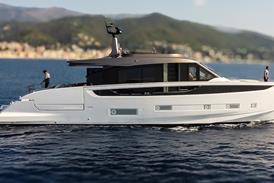Close menu
- Home
-
Market Reports
- Back to parent navigation item
- Market Reports
-
Latest Reports
- Back to parent navigation item
- Latest Reports
- Overview: Following the path of Epictetus
- Stabilisation: Smooth and steady wins the race
- Overview: Boating market seeks stability amid tariffs..
- Boatbuilders: Brazilian builders navigate between innovation..
- Overview: Dutch industry forecasts stable year
- Browse all Reports >>>
- Top Markets
- Recommended
- Browse all Recommended >>>
- Product Reports
- News
- Companies
- Topics
- Events
- Subscribe
How smart masts could revolutionise yacht ventilation
By Jake Kavanagh2025-08-01T13:15:00

By turning sunlight into airflow, Foundation Zero and Carbo-Link have reimagined the yacht mast as a natural HVAC system — a zero-energy cooling concept that could reshape how sailing craft stay comfortable at sea
To continue reading this article…
Already registered?
Create a FREE account
To continue reading this article you must
register for a free account and login.
Subscribe to IBI Plus
Subscribe today and recieve
instant unlimited sitewide access.
- Subscribe
- Print Issues
- Topics A-Z
- Contact us
- Terms and Conditions
- Privacy Policy
- Cookie Policy
- © 2024 BOAT INTERNATIONAL MEDIA LTD.
- Members of:
-
-
-
-

- Partners with:
-

-
- © 2025 Boat International Media Ltd.
- Topics A-Z
- IBI Magazine
- Terms & Conditions
- Privacy Policy
- Cookie Policy
- Subscribe
- Contact us
Site powered by Webvision Cloud










 LinkedIn
LinkedIn X / Twitter
X / Twitter Facebook
Facebook Email us
Email us


